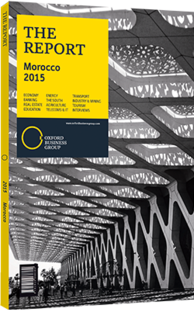Morocco promoting scientific research as key focus for education
A comprehensive reform programme to improve access and enhance the performance of the education system has been under way in Morocco. Notably, the authorities are working to restructure the sector as a whole by grouping universities under umbrella bodies to increase their visibility on a national and regional level. This will also help achieve greater economies of scale. For instance, in September 2014 Casablanca-Ain Chock University merged with the University of Mohammedia, establishing University Hassan II Casablanca. The University of Rabat-Agdal and the University of Mohammed V-Souissi also merged in September 2014 to create Mohammed V University. By combining resources and expertise, the mergers will enable the universities it to compete with other large research centres internationally.
Research Output
Another major focus is to promote scientific research in universities. Testament to this is the ongoing project to establish the centre of research, development and innovation in engineering science in Casablanca. Works on the project began in October 2014 and are expected to mobilise up to Dh43m (€4.68m) in investment. Adjacent to the National Higher School for Electricity and Mechanics, the centre will comprise several laboratories, notably in computer science, electricity and mechanics, and will oversee the training of engineers in line with the government’s ambitions to train a total 15,000 engineers as of 2015 and eventually bringing this to 25,000 a year by 2025. The number of engineers trained in Morocco today remains relatively low, with just 8.6 engineers for every 10,000 inhabitants, as opposed to 64 in France and 540 in Japan.
“The continued development of scientific research activity in Morocco must rely on three key pillars: a greater mobilisation of human capital including research faculty, doctoral students and post-doc programmes; further consolidation of national research infrastructure, with universities providing the resources and equipment; stable and competitive financing options, linked to priority sectors where possible, and managed by a single agency,” Driss Aboutajdine, the director of the National Centre for Scientific and Technical Research, told OBG.
International Partnerships
The number of international partnerships in the tertiary sector has also risen in recent years. “It is part of the current government strategy to develop bilateral relations with foreign universities,” Nezha Alami, the rector of Université Internationale de Casablanca (UIC), told OBG. UIC is part of the Laureate International academic community, which connects it to some 80 other universities in 29 countries involved in the network.
The growth of international cooperation has prompted renewed debate over language usage. While the language of instruction is Arabic in most primary and secondary schools in Morocco, university education is offered primarily in French. This switch can be a challenge for many students entering higher education. In 2014 the Ministry of Higher Education and Scientific Research announced plans to replace French with English as the primary language of higher education, although the changes have not yet been implemented. The Higher Council for Education, Training and Scientific Research has also recommended replacing French with English in the national curricula.
“English-language proficiency is an important tool for communication, employment and entrepreneurship. For university graduates to be successful and help their companies develop, they must have foreign language proficiency, starting with English,” Alami said.
Morocco ranked 55th out of 63 countries in the 2014 English Proficiency Index published by Education First, just above Egypt at 56th place and Algeria on 60th. Indeed, Morocco is trending downward, with a decline in score of 6.97 points since 2007. As of 2015, English-language proficiency has been required of new teacher recruits, while English is also becoming increasingly prominent in university programmes, particularly in the faculties of medicine and engineering.
You have reached the limit of premium articles you can view for free.
Choose from the options below to purchase print or digital editions of our Reports. You can also purchase a website subscription giving you unlimited access to all of our Reports online for 12 months.
If you have already purchased this Report or have a website subscription, please login to continue.

